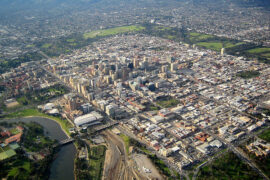The Ultimate Guide to the Australian Foot Size Chart for Kids
G’day, parents! Are you on a quest to find the perfectly fitting shoes for your bubbly little ones? Struggle no more! Our superb guide to the Australian Foot Size Chart is here to ensure that your kids’ tiny toes are both comfy and supported in their adorable shoes. We understand that shoe shopping can sometimes feel like navigating through the outback without a compass, especially with how quickly children’s feet grow. But fear not! With our sunny disposition and expertise, we’ll transform this daunting task into a walkabout in the park.
Why the Right Shoe Size Matters for Your Kids
Before we dive into the nitty-gritty of shoe sizing, let’s take a moment to chat about the ‘why’ behind the importance of proper fit for your children’s feet. Wearing the correct shoe size is not just about comfort; it’s pivotal for healthy foot development. Shoes that are too tight can lead to blisters, ingrown toenails, and even impact the way your child walks. If they’re too loose, well, you’re looking at a potential trip-and-fall scenario. We want your little tackers to run, jump, and explore with the freedom that only well-fitting shoes can provide!
Measuring Your Child’s Feet: The First Step to the Perfect Fit
Lacing up the task (see what we did there?), let’s learn how to measure those wriggly feet. You’ll need a blank piece of paper, a marker, and a ruler or measuring tape. Have your kiddo stand on the paper and gently press down on their foot to get a more accurate reading, as feet tend to spread when bearing weight. Use the marker to trace around each foot, and then measure the length from the heel to the longest toe. It’s usually the big toe, but sometimes the second toe likes to stand out. Remember, it’s best to measure both feet because it’s common for one foot to be larger than the other. Always choose the size that fits the larger foot to keep both piggies happy!
Australian Foot Size Conversion: International Shoe Sizes Explained
Now that you’ve got your child’s foot measurements, what’s next? The grand conversion! Finding the correlation between those measurements and the right shoe size is crucial. Here, we’ll provide a comprehensive Australian foot size chart, and teach you how to convert between Australian, US, UK, and European sizes because, as we all know, kids stylishness knows no borders.
To give you a quick hop ahead, let’s touch on a few key points: For infants and young children, Australian sizes are generally two sizes up from the US size. For example, an AUS size 6 would be a US size 4. Quite simple, right? But remember, this is just a kangaroo’s leap – each brand might differ slightly, so always check their specific size guides.
Furthermore, keep an eye on the ‘half-size’ system, which adds about 3 millimeters in length per half size. This can be the difference between a snug fit and a “mom, my toes are squished” kind of day. So, join us as we detail the entire Australian shoe size chart, how to convert it, and ensure you’ve got the fitting finesse of a seasoned pro.
Dear parents, rest assured that this guide is just the beginning. We’ll be covering it all – from tips on how to tell when it’s time for new shoes to understanding shoe width and even some carefree pointers on how to make shoe shopping a delightful family outing. So, stay tuned, and let’s give your children the gift of perfectly fancy footwork!
After all, when their feet are happy, they can step boldly into adventure – and isn’t that what being a kid is all about? Stay perky and ready to tackle our in-depth dive into the Australian Foot Size Chart, where no stone (or sneaker, sandal or boot) will be left unturned!
And remember, if you ever feel like you’re lost in the shoe section, this guide will be your trusty roadmap, turning those shopping trips from confusing to cruisy. Let’s ensure every little hop, skip, and jump is in comfort and style!

5 Essential Things Parents Should Know When Preparing for Australian Foot Size Chart
- Consistent Measuring: Use a consistent method when measuring your child’s feet to ensure accuracy. Feet are best measured at the end of the day when they are their largest due to natural swelling.
- Shoe Sizing May Vary: Be aware that different brands may have slight variations in size. Do not rely solely on the size number; checking the actual insole measurement can be helpful.
- Room to Grow: A little extra space (around a thumb’s width) between the toes and the shoe’s end will not only provide comfort but also room for growth, extending the shoe’s usefulness.
- Check the Width: Just as important as the length, the width of a child’s foot should also be considered. A well-fitting shoe should be snug but not tight and allow freedom of movement without slippage.
- Monitor their Feet: Children’s feet grow rapidly, and they often don’t verbalize discomfort. Regularly check for signs like worn-out shoes or red marks on their feet to know when it’s time for the next size up.
How to Choose the Best Shoe Sizes with the Australian Foot Size Chart
With our trusty tips under your belt, choosing the best shoe sizes using the Australian Foot Size Chart is your next big leap. The chart provides a range of sizes corresponding to foot length in centimeters. By comparing your child’s foot measurement to the chart, you can select the shoe size that’s just right for them. It’s as easy as spotting a kangaroo in the outback!
Remember, look for the centimeter or millimeter measurement when comparing, as this is the most universal form of measurement among shoe sizing charts. Be smart about your child’s socks too! If they usually wear thick socks, have them wear those during measuring, as this will affect the fit of their shoe.
Frequent Shoe Size Checks: A Parent’s Best Practice
Like seasons, children’s shoe sizes change throughout the year. The general rule of thumb is to check their shoe size every three to four months for toddlers, twice a year for pre-schoolers, and at least once a year for school-aged children. This doesn’t mean you’ll be buying new shoes this often, but it keeps you ahead of the game in spotting growth spurts! You’ll want to make sure that growth spurt doesn’t catch you by surprise, leaving your kid with tight, uncomfortable shoes.
When to Invest in New Shoes: Understanding the Signs
Aside from keeping an eye on their shoe size, look for the telltale signs that a new pair of shoes might be due. Worn soles, toe imprints on the shoe’s front, or even your child suddenly tripping more often can all be indicators. Also, listen to your child – if they mention their shoes feel tight or uncomfortable, it’s time to take action.
Making Shoe Shopping a Breeze: Tips for a Happy Experience
We get it, shoe shopping with kids can sometimes be as unpredictable as the weather in Melbourne. To make it more enjoyable, choose a time when your child is well-rested and fed, opt for stores specifically catering to children for a kid-friendly experience, and make it a fun adventure rather than a chore. Remember, patience is key, and your child’s comfort should always come first.
By using the Australian Foot Size Chart correctly, being mindful of growth, and choosing shoes that fit well, your child will be set to romp around the playground, dazzle at family events, or simply enjoy a day out with mates with happy, cozy feet. So, cheers to finding that perfect fit and here’s to many joyful steps ahead!
For more great articles please see here. For more information see here
Disclaimer
The articles available via our website provide general information only and we strongly urge readers to exercise caution and conduct their own thorough research and fact-checking. The information presented should not be taken as absolute truth, and, to the maximum extent permitted by law, we will not be held liable for any inaccuracies or errors in the content. It is essential for individuals to independently verify and validate the information before making any decisions or taking any actions based on the articles.




